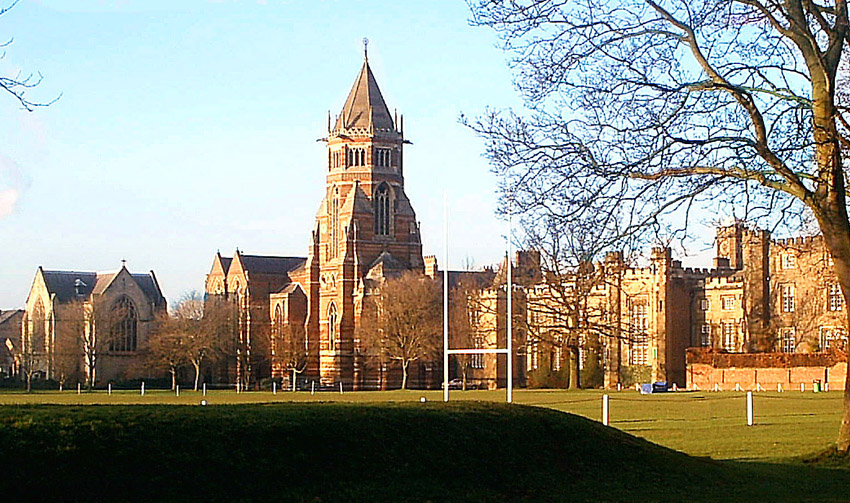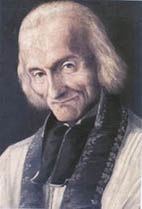|
Christopher Lewis (priest)
Christopher Andrew Lewis (born 4 February 1944) is a Church of England priest and academic. He was Dean of St Albans from 1994 to 2003 and Dean of Christ Church from 2003 to 2014. Early life and education Lewis was born on 4 February 1944, to Admiral Sir Andrew Lewis and his wife, Rachel Elizabeth (née Leatham). He was educated at Marlborough College, an all-boys public school in Wiltshire.Lewis, Very Rev. Christopher Andrew PhD in ''Who's Who 2008'' (A & C Black, 2008; online edn, Oxford University Press, Dec 2007online(subscription required). Retrieved 12 August 2008 He went on to study sociology and theology at the University of Bristol, graduating with a Bachelor of Arts (BA) degree in 1969. He later returned to studying, and graduated from Corpus Christi College, Cambridge with a Doctor of Philosophy (PhD) degree in theology in 1974. He trained for ordination at Westcott House, Cambridge. Career Military service Lewis served in the Royal Navy from 1961 to 1966. He ser ... [...More Info...] [...Related Items...] OR: [Wikipedia] [Google] [Baidu] |
The Very Reverend
The Very Reverend (abbreviated as The Very Revd or The Very Rev) is an honorific style (form of address), style given to certain (primarily Western Christian, Western) Christian clergy and Christian minister, ministers. The definite article "the" should always precede "Reverend" when used before a name (e.g., ''the Very Rev. John Smith''), because "Reverend" is an honorific adjective, not a title. Catholic In the Catholic Church, the style is given, by custom, to priests who hold positions of particular note. These include: vicars general, episcopal vicars, judicial vicars, ecclesiastical judges, vicars forane (deans or archpriests), provincials of religious orders, rectors or presidents of cathedrals, seminaries or colleges/universities, priors of monasteries, or Canon (priest), canons. Monsignors of the grade of Chaplain of His Holiness are styled as ''the Very Reverend Monsignor'', while honorary prelates and protonotary apostolics are styled ''the Right Reverend Monsignor'' ... [...More Info...] [...Related Items...] OR: [Wikipedia] [Google] [Baidu] |
Public School (United Kingdom)
A public school in England and Wales is a type of fee-charging Private schools in the United Kingdom, private school originally for older boys. The schools are "public" from a historical schooling context in the sense of being open to pupils irrespective of locality, Christian denomination, denomination or paternal trade guild, trade or profession or family affiliation with governing or military service, and also not being run for the profit of a private owner. Although the term "public school" has been in use since at least the 18th century, its usage was formalised by the Public Schools Act 1868 (31 & 32 Vict. c. 118), which put into law most recommendations of the 1864 Clarendon Report. Nine prestigious schools were investigated by Clarendon (including two day schools, Merchant Taylors' School, Northwood, Merchant Taylors' and St Paul's School, London, St Paul's) and seven subsequently reformed by the Act: Eton College, Eton, Shrewsbury School, Shrewsbury, Harrow School, Ha ... [...More Info...] [...Related Items...] OR: [Wikipedia] [Google] [Baidu] |
Aston Rowant
Aston Rowant (anciently ''Aston Rohant'') is a village, civil parish and former manor about south of Thame in South Oxfordshire, England. The parish includes the villages of Aston Rowant and Kingston Blount, and adjoins Buckinghamshire to the southeast. The 2011 Census recorded the parish's population as 793. The Lower Icknield Way passes through the parish southeast of the village. Archaeology Toward the end of the 17th century a large Roman vessel, containing five smaller ones, was found at Kingston Blount. In 1971 a hoard of late seventh- and early eighth-century silver coins called sceattas was found on the Chiltern escarpment, near where the A40 road crosses the Icknield Way. In 1972 the hoard was reported to total 175 coins, by 1994 the total was 350, and either case it was then the largest single find of sceattas in Britain. A Coroner's Court determined that the coins are treasure trove, and the British Museum then acquired the hoard. The hoard is believed to have ... [...More Info...] [...Related Items...] OR: [Wikipedia] [Google] [Baidu] |
Ripon College Cuddesdon
Ripon College Cuddesdon (RCC) is a Church of England seminary, theological college in Cuddesdon, a village outside Oxford, England. The College trains men and women for ministry in the Church of England: stipendiary, non-stipendiary, local ordained and lay ministry, through a wide range of flexible full-time and part-time programmes. History Ripon College Cuddesdon was formed from an amalgamation in 1975 of Cuddesdon College and Ripon Hall. The name of the college, which is incorporated by royal charter, deliberately contains no comma. Cuddesdon College and links with Oxbridge Samuel Wilberforce, Bishop of Oxford, founded Cuddesdon College in April 1853, as the Oxford Diocesan Seminary at Cuddesdon to train graduates from University of Oxford, Oxford and University of Cambridge, Cambridge. Its original buildings, designed by the Diocesan Architect for Oxford George Edmund Street, G. E. Street, were built opposite the Cuddesdon Palace. The Neo-Gothic buildings are regarded as th ... [...More Info...] [...Related Items...] OR: [Wikipedia] [Google] [Baidu] |
Barnard Castle
Barnard Castle (, ) is a market town on the north bank of the River Tees, in County Durham, England. The town is named after and built around a medieval castle ruin. The town's Bowes Museum has an 18th-century Silver Swan automaton exhibit and paintings by Goya and El Greco. Barnard Castle is on the left bank of the River Tees, opposite to Startforth, and is south-west of the county town of Durham. Nearby towns include Bishop Auckland to the north-east, Darlington to the east and Richmond to the south-east. The largest employer is GlaxoSmithKline, with a manufacturing facility on the town's outskirts. History Before the Norman Conquest, in 1066, the upper half of Teesdale was combined into an Anglo-Norse estate, which was centred upon the ancient village of Gainford, and mortgaged to the Earls of Northumberland. During Norman times, in 1080, the first Norman Bishop of Durham, Bishop Walcher, was murdered. This led to the surrounding country being attacked and ... [...More Info...] [...Related Items...] OR: [Wikipedia] [Google] [Baidu] |
Curate
A curate () is a person who is invested with the ''care'' or ''cure'' () of souls of a parish. In this sense, ''curate'' means a parish priest; but in English-speaking countries the term ''curate'' is commonly used to describe clergy who are assistants to the parish priest. The duties or office of a curate are called a curacy. Etymology and other terms The term is derived from the Latin (compare Curator). In other languages, derivations from ' may be used differently. In French, the is the chief priest (assisted by a ) of a parish, as is the Italian , the Spanish , and the Filipino term (which almost always refers to the parish priest), which is derived from Spanish. Catholic Church In the Catholic Church, the English word ''curate'' is used for a priest assigned to a parish in a position subordinate to that of the parish priest. The parish priest (or often, in the United States, the ''pastor'' or ''minister'') is the priest who has canonical responsibility for the ... [...More Info...] [...Related Items...] OR: [Wikipedia] [Google] [Baidu] |
Priest
A priest is a religious leader authorized to perform the sacred rituals of a religion, especially as a mediatory agent between humans and one or more deity, deities. They also have the authority or power to administer religious rites; in particular, rites of sacrifice to, and propitiation of, a deity or deities. Their office or position is the "priesthood", a term which also may apply to such persons collectively. A priest may have the duty to hear confessions periodically, give marriage counseling, provide prenuptial counseling, give spiritual direction, teach catechism, or visit those confined indoors, such as the sick in hospitals and nursing homes. Description According to the trifunctional hypothesis of prehistoric Proto-Indo-European society, priests have existed since the earliest of times and in the simplest societies, most likely as a result of agricultural surplus#Neolithic, agricultural surplus and consequent social stratification. The necessity to read sacred text ... [...More Info...] [...Related Items...] OR: [Wikipedia] [Google] [Baidu] |
Deacon
A deacon is a member of the diaconate, an office in Christian churches that is generally associated with service of some kind, but which varies among theological and denominational traditions. Major Christian denominations, such as the Catholic Church, the Oriental Orthodox Churches, the Eastern Orthodox Church, Lutheranism, Presbyterianism, Methodism, and Anglicanism, view the diaconate as an order of ministry. Permanent deacons (or distinctive deacons) are those who do not later transition to another form of ministry, in contrast to those continuing their formation who are then often called transitional deacons. Origin and development The word ''deacon'' is derived from the Greek word (), which is a standard ancient Greek word meaning "servant", "waiter", "minister", or "messenger". Recent research has highlighted the role of the deacon "as a co-operator" and "go-between," emphasizing their intermediary position in early Christian communities. It is generally assum ... [...More Info...] [...Related Items...] OR: [Wikipedia] [Google] [Baidu] |
Ordained
Ordination is the process by which individuals are Consecration in Christianity, consecrated, that is, set apart and elevated from the laity class to the clergy, who are thus then authorized (usually by the religious denomination, denominational hierarchy composed of other clergy) to perform various religious rites and ceremonies. The process and ceremonies of ordination vary by religion and denomination. One who is in preparation for, or who is undergoing the process of ordination is sometimes called an ordinand. The liturgy used at an ordination is commonly found in a book known as an Order of Mass, Ordinal which provides the ordo (ritual and rubrics) for celebrations. Christianity Catholic, Orthodox, Lutheran and Anglican churches In Catholicism and Orthodoxy, ordination is one of the seven sacraments, variously called holy orders or ''Christian laying on of hands, cheirotonia'' ("Laying on of Hands"). Apostolic succession is considered an essential and necessary concept ... [...More Info...] [...Related Items...] OR: [Wikipedia] [Google] [Baidu] |
Royal Navy Reserve
The Royal Naval Reserve (RNR) is one of the two volunteer reserve forces of the Royal Navy in the United Kingdom. Together with the Royal Marines Reserve, they form the Maritime Reserve. The present RNR was formed by merging the original Royal Naval Reserve, created in 1859, and the Royal Naval Volunteer Reserve (RNVR), created in 1903. The Royal Naval Reserve has seen action in World War I, World War II, the Iraq War and the War in Afghanistan. History Establishment The Royal Naval Reserve (RNR) has its origins in the Register of Seamen, established in 1835 to identify men for naval service in the event of war, although just 400 volunteered for duty in the Crimean War in 1854 out of 250,000 on the Register. This led to a Royal Commission on Manning the Navy in 1858 and 1859, which in turn led to the Naval Reserve Act 1859. This established the RNR as a reserve of professional seamen from the British Merchant Navy and fishing fleets, who could be called upon during tim ... [...More Info...] [...Related Items...] OR: [Wikipedia] [Google] [Baidu] |







